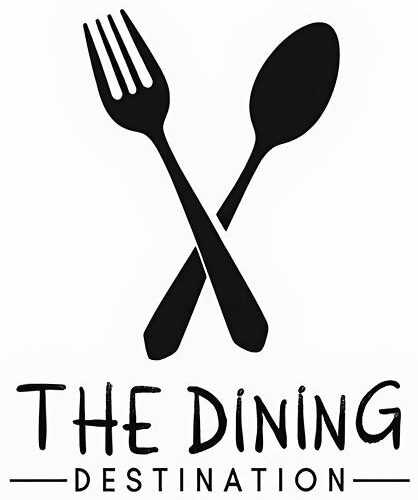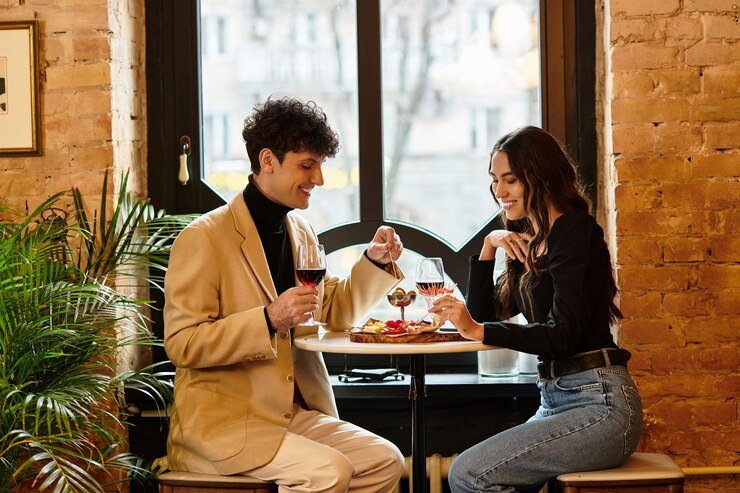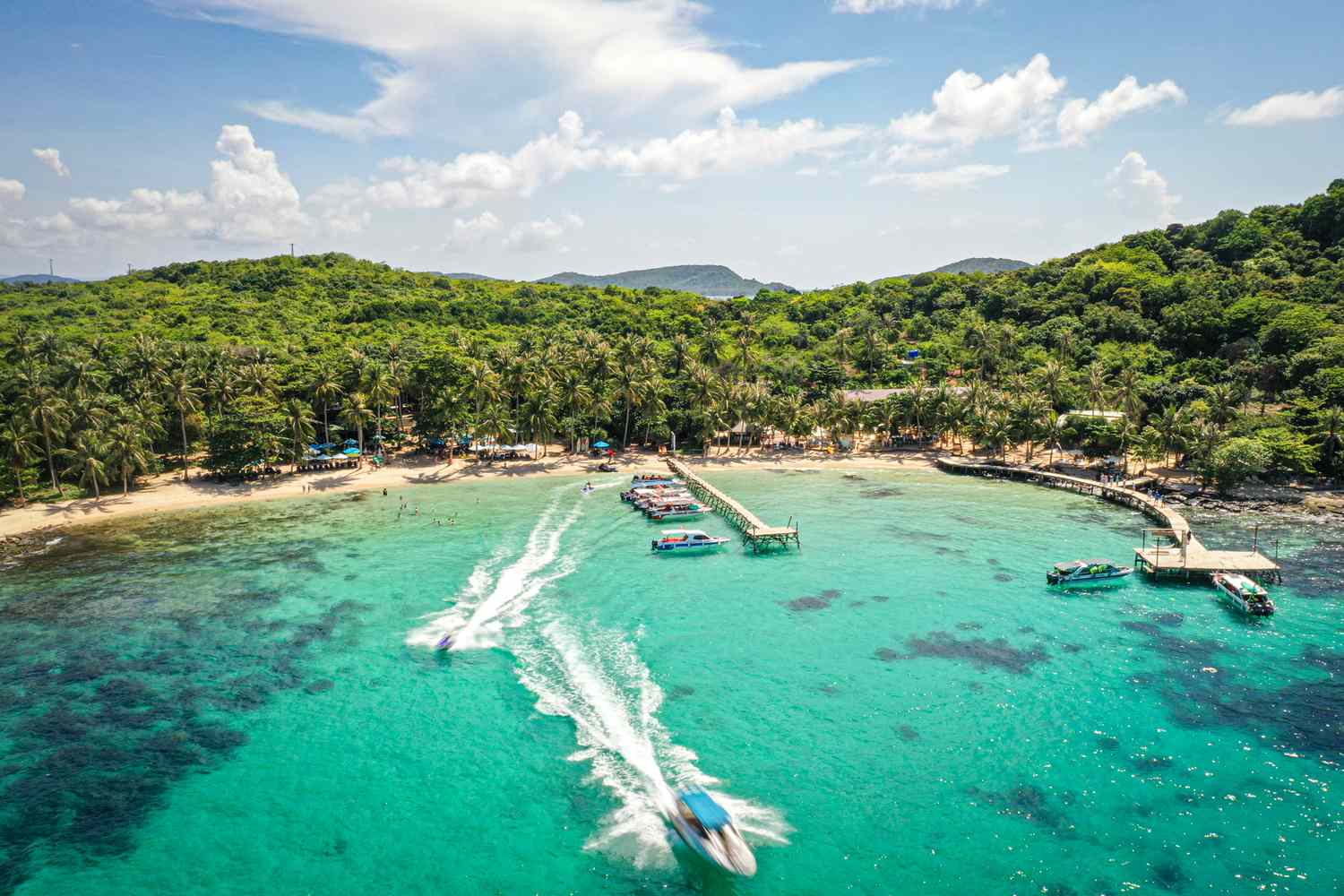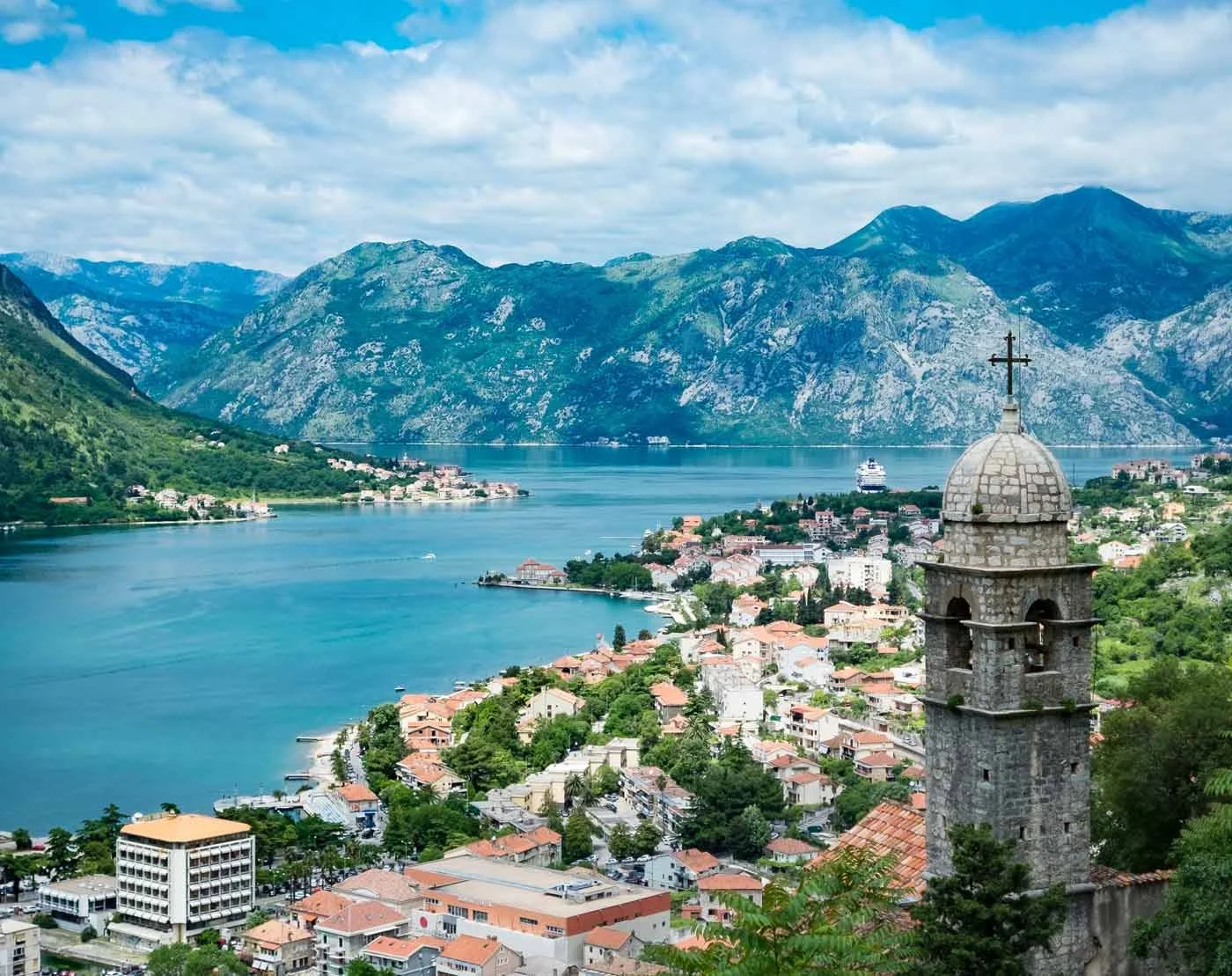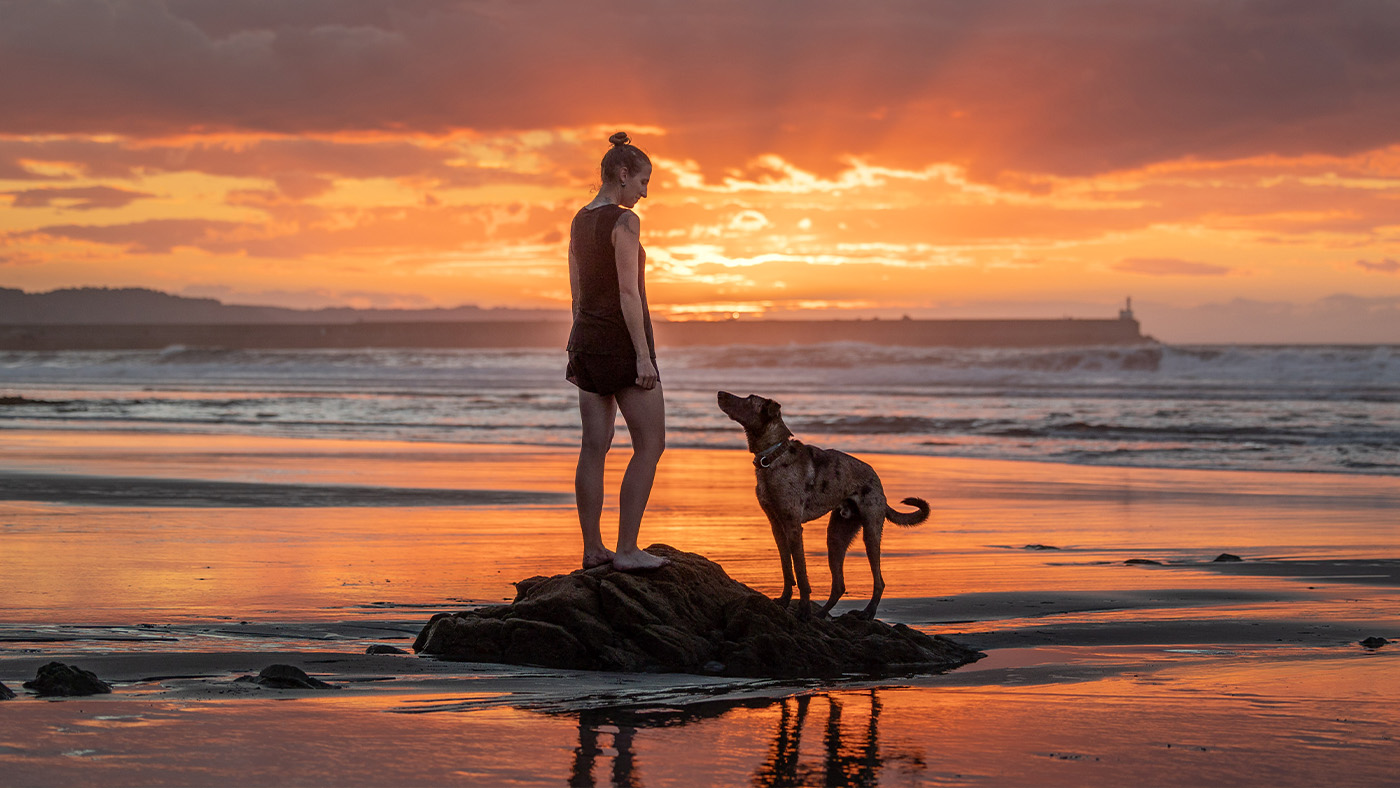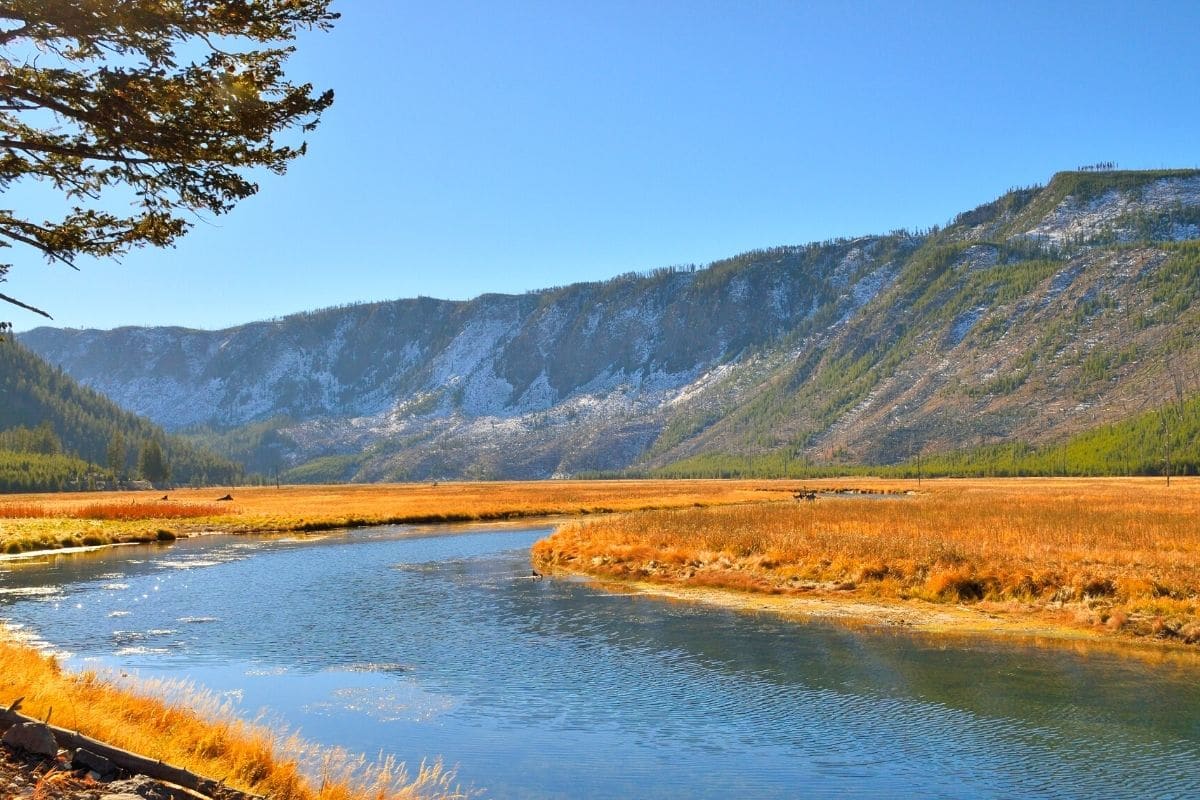Why Experiential Dining Is Changing How We Eat Out
Experiential dining destinations are revolutionizing the restaurant industry by offering immersive, multisensory experiences that go far beyond just serving food.
If you’re looking for unique dining experiences that engage all your senses, here are the top types to explore:
| Type of Experience | What to Expect | Notable Examples |
|---|---|---|
| Themed Environments | Immersive decor, storytelling elements | Medieval Times, The Magic Time Machine |
| Interactive Dining | Guest participation, DIY cooking | Japanese BBQ, Fondue restaurants |
| Multisensory Engagement | Technology, art, and food fusion | Ultraviolet (Shanghai), Sublimotion (Ibiza) |
| Unique Locations | Underwater, sky-high, or cave settings | Ithaa Undersea Restaurant, Dinner in the Sky |
| Dark Dining | Eating in complete darkness | Dans le Noir? (available in 30 cities) |
In a world saturated with food delivery apps and conventional dining options, experiential restaurants are meeting our growing hunger for meaningful, Instagram-worthy outings. According to Yelp’s annual report, searches for underwater restaurants increased by a staggering 263% in 2023, while dinner theater searches jumped 109%.
“Dining out has evolved far beyond the plate and even further beyond the simple act of eating,” notes one industry expert. The traditional white-tablecloth experience simply no longer cuts it for many diners seeking memorable moments.
What makes these destinations special is their ability to engage multiple senses simultaneously. Some remove sight entirely to heighten taste and smell (like dining-in-the-dark concepts), while others add theatrical elements, project visual stories onto your plate, or serve dishes in extreme environments like suspended platforms or underwater caves.
The science behind this trend is compelling – Oxford research found that diners rated food plated like abstract art higher than traditionally presented dishes. We literally taste with our eyes first, and innovative restaurateurs are leveraging this knowledge to create unforgettable dining journeys.
Whether you’re planning a special celebration or simply want to break free from routine restaurant experiences, the five hacks we’re about to share will help you find the most captivating experiential dining destinations around the world.

Hack #1: Follow the Data Trail – Use Trend Reports & Search Statistics
Ever wonder how food enthusiasts always seem to know about the coolest dining spots before everyone else? At The Dining Destination, we’ve got a little secret – we follow the data before we follow our appetites!
The numbers tell an exciting story about where dining is headed. According to Yelp’s latest trend report, 2023 has officially become “the year of the experience,” with searches for underwater restaurants skyrocketing by a jaw-dropping 263% compared to last year. Dinner theater experiences aren’t far behind, showing a 109% increase in search interest. These aren’t random blips – they’re signposts pointing to the future of dining.
“When you see triple-digit growth in searches for a particular dining format, that’s not just curiosity—it’s untapped demand waiting to be satisfied,” a restaurant industry analyst recently shared with us.

We’ve become quite the data detectives, regularly checking trend reports from review platforms, tourism board announcements, Google Trends data, and social media analytics. This approach has helped us find gems like Le Petit Chef—that delightful concept using 3D projection mapping to create a tiny animated chef who “prepares” your meal right on your plate—months before it expanded to its current 67+ locations worldwide.
For those curious about the science behind multisensory dining experiences, recent research has confirmed what many chefs already intuitively knew: our perception of taste is dramatically influenced by all our senses, not just our taste buds.
Why This Works for Experiential Dining Destinations
Our data-driven approach works particularly well for finding experiential dining destinations because these venues naturally generate significant online buzz. Unlike traditional restaurants that might rely on critic reviews or local word-of-mouth, experiential dining concepts are designed to be shared, photographed, and talked about online.
When we track the data patterns, we can forecast demand months in advance. Seeing a spike in “dining in the dark” searches for a particular city tells us to book those reservations early before they’re impossible to get.
The data has also helped us identify emerging formats before they hit the mainstream. We spotted the rise of cannabis-infused dining experiences and augmented reality meals while they were still in their infancy.
We’ve learned to track geographic expansion patterns too. Many successful experiential dining destinations test their concepts in major cities before expanding globally. By watching these patterns, we can often predict which exciting concepts might soon arrive in new markets.
Perhaps most valuable is our ability to gauge staying power. Not every dining concept that creates initial buzz has the substance to last. The data shows different patterns for flash-in-the-pan trends versus concepts with real staying power – we look for sustained interest rather than brief spikes in attention.
By letting the numbers guide us, we’ve managed to stay ahead of the curve in finding the most captivating experiential dining destinations around the world. And now, we’re sharing these data-driven insights with you!
Hack #2: Categorize by Experience Type Before You Book
Have you ever found yourself scrolling through endless restaurant options, feeling overwhelmed by choices? At The Dining Destination, we’ve been there too. That’s why we developed a smart categorization system that’s changed how we find amazing experiential dining destinations.
Instead of typing vague phrases like “cool restaurants” into search engines, we’ve learned to get specific. This approach is like having a treasure map instead of wandering aimlessly through the culinary wilderness.
“Categorizing dining experiences this way is like having a map in uncharted territory,” explains our head of culinary research. “It helps us find exactly what we’re looking for instead of wandering aimlessly.”
When you’re planning your next memorable meal, try thinking in these specific categories:

Need help narrowing down your search? Think about what matters most to you. Are you craving a theatrical element with your meal? Do you want to be actively involved in the cooking process? Or perhaps you’re celebrating a special occasion that calls for a truly jaw-dropping setting?
By pinpointing exactly what you’re after, you’ll find booking the perfect experience becomes so much easier. You might search for “Japanese BBQ where you cook your own meat” instead of just “unique restaurants” – and suddenly, your options become much more relevant.
Experiential Dining Destinations by Category
Let me walk you through some of the most impressive experiential dining destinations we’ve finded through our categorization method:
If you love themed environments where storytelling comes alive, Medieval Times offers a hands-on feast while knights joust for your entertainment. The Magic Time Machine in Texas takes theming to another level with servers dressed as beloved fictional characters. For something edgier, London’s Alcotraz lets you don a prison jumpsuit and smuggle in your own liquor for a thrilling “behind bars” cocktail experience.
Prefer to play an active role in your meal? Interactive participation venues like Niwa Japanese BBQ in Dallas let you grill premium meats right at your table (pro tip: visit on the 29th for special “Meat Day” deals). The Melting Pot has perfected the art of fondue dining across multiple locations. For something truly unique, the Labassin Waterfall Restaurant in the Philippines invites you to dangle your feet in flowing water while you eat – talk about dinner with a splash!
For those seeking to engage all their senses, multisensory engagement restaurants deliver unforgettable experiences. Shanghai’s Ultraviolet by Paul Pairet offers just one table for ten lucky guests, with synchronized lights, sounds, and scents accompanying each carefully crafted course. Dans le Noir? flips the script by removing sight entirely – you’ll dine in complete darkness, guided by visually impaired servers. Milan’s intimate Sensorium combines theatrical lighting and sound with exceptional cuisine at their 11-seat counter.
Perhaps the most Instagram-worthy category is extreme locations – restaurants situated in places that seem impossible. The Maldives’ Ithaa Undersea Restaurant sits 16 feet below sea level, surrounded by 270-degree marine views. For thrill-seekers, Dinner in the Sky operates in over 80 countries, hoisting diners 150 feet in the air on a crane-suspended platform. Italy’s Grotta Palazzese is carved into a limestone cave overlooking the Adriatic Sea, while El Diablo in Lanzarote, Spain, cooks your meal using actual volcanic heat reaching a scorching 752°F!
By thinking about dining experiences in these specific categories, you’ll find experiential dining destinations that perfectly match your mood and occasion. Want to explore more unique dining spots? Check out our comprehensive guide to unique dining spots for even more inspiration.
The perfect dining experience isn’t just about great food – it’s about creating memories that last long after the last bite. What category speaks to you?
Hack #3: Map Trending Experiential Dining Destinations on Social Media
If you want to find the most exciting experiential dining destinations before they hit mainstream travel guides, social media is your secret weapon. At The Dining Destination, we’ve become experts at mining social platforms for emerging culinary gems that will blow your mind (and your taste buds).
Think about it: the most incredible dining experiences are practically designed to be shared online. Those underwater restaurants, dining-in-the-dark concepts, and meals served on platforms suspended 150 feet in the air? They’re social media gold! By knowing how to steer the social landscape strategically, you can uncover hidden treasures months before your friends even hear about them.
Here’s our tried-and-true approach to social media sleuthing:
We track specialized hashtags that go way beyond the obvious #foodie tags. We follow #experientialdining, but the real magic happens with niche tags like #dininginthedark, #underwaterrestaurant, and #lepetitchef. These lead us to the truly unique concepts that aren’t yet overrun with tourists.
“I finded the most amazing dining experience in Prague through a random #projectmappingdinner hashtag,” shares one of our regular readers. “It was this incredible 7-course meal where each dish was accompanied by animated projections that transformed the entire table. I booked immediately and ended up having one of the most memorable meals of my life!”
We also religiously monitor location tags for cities known for culinary innovation. Copenhagen, Tokyo, Barcelona, and New York are hotspots, but we’ve found incredible concepts in unexpected places like Tallinn, Estonia and Ljubljana, Slovenia by watching their geotags.
The engagement patterns tell us so much more than simple popularity. We pay special attention to which experiences generate the most shares and saves—not just likes. When people save a post, they’re essentially bookmarking it for future reference, which signals genuine intent to visit.

How to Decode Viral Posts for Experiential Dining Destinations
Not all viral dining content leads to worthwhile experiences—some places are just pretty but serve mediocre food. We’ve learned to spot the difference between genuinely innovative experiential dining destinations and what we call “Instagram bait” (places designed for photos rather than flavor).
When we’re evaluating social posts about dining experiences, we look for emotional reactions from diners, not just pretty pictures. Are people posting videos that capture multiple aspects of the experience? Do the comments mention the actual quality of the food, or just how cool the setting looks? These details tell us everything.
Micro-influencers with smaller but dedicated followings (usually between 5,000-50,000 followers) often lead us to the most authentic experiences. Unlike mega-influencers who might be paid to promote certain venues, these smaller accounts typically share genuine enthusiasm for unique dining concepts they’ve personally enjoyed.
“I trust recommendations from food micro-influencers way more than celebrity posts,” says Maria, one of our community members. “They’re actually passionate about the food itself, not just getting the perfect selfie.”
We’ve also noticed that truly exceptional dining experiences feature share-worthy design that goes beyond a single Instagram moment. The best venues create multiple memorable touchpoints throughout the meal—from the entrance experience to table settings, plating presentations, and even restroom design (yes, really!).
This approach helped us find Supperclub.Tube in London—a multi-course Latin American dining trip inside a refurbished 1967 London Underground carriage—months before mainstream travel sites caught on. We found it through a London-based food photographer’s Instagram Stories, noticed the enthusiastic comments from locals (not just tourists), and immediately knew it was something special.
The goal isn’t just finding places that look good in photos—it’s finding experiential dining destinations that deliver unforgettable moments you’ll talk about for years to come. Social media is simply our map to finding these hidden treasures before everyone else does.
Hack #4: Leverage Tech & Art Communities for Insider Leads
Some of the most mind-blowing experiential dining destinations aren’t appearing in traditional restaurant guides—they’re emerging from the creative intersections of food, technology, and art. We’ve finded that the real magic happens when chefs collaborate with tech innovators, immersive theater directors, and cutting-edge designers.
At The Dining Destination, we’ve become pretty obsessed with following these creative communities because they consistently lead us to dining experiences that feel like they’re from the future.
“The most innovative restaurants today are essentially interdisciplinary art projects where you can eat,” explains our culinary trend researcher. “And we find them by looking beyond food blogs to design festivals, tech showcases, and art installations.”
Here’s how we tap into these creative networks:
We religiously follow major design award announcements like the Red Dot Design Award, which recently recognized Eatrenalin—an incredible concept where diners float through themed environments in specially designed moving chairs. These awards often spotlight restaurant concepts months or years before they become mainstream sensations.
We also make it a point to virtually attend (or send team members to) technology conferences like SXSW and CES. These events frequently feature early demonstrations of technologies that later find their way into cutting-edge restaurants. Last year, we finded an AI-powered dining concept at a tech showcase six months before it opened to the public!
Some of our favorite finds have come from connecting with immersive theater companies. These theatrical groups are increasingly collaborating with chefs to create narrative dining experiences where food becomes part of an unfolding story. The lines between dining and performance are beautifully blurring in these spaces.
Food design exhibitions have also proven to be goldmines for finding innovative concepts. These events showcase experimental approaches to food presentation and dining environments before they evolve into commercial ventures. We found a zero-waste tasting menu concept at a sustainability design exhibition that now has a three-month waiting list.
This approach led us to gems like Fork n’ Film, where dishes are perfectly synchronized with movie scenes, creating a multi-sensory cinematic experience. We also finded Le Petit Chef through a digital art showcase long before it expanded to dozens of locations worldwide.
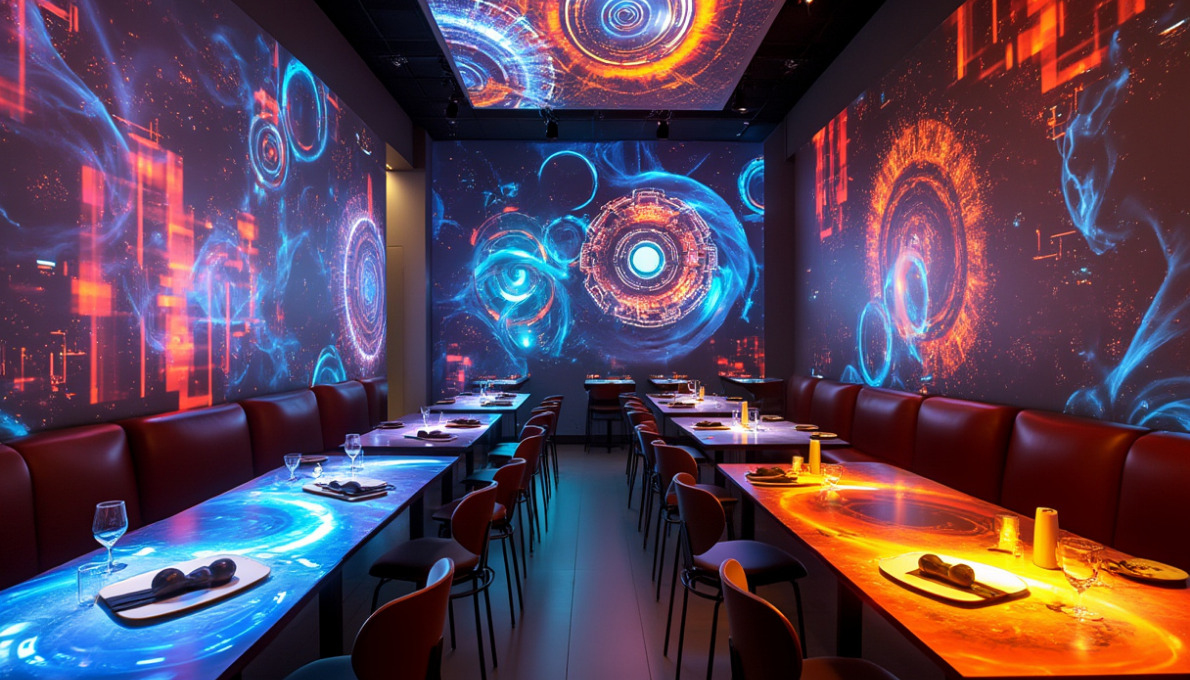
Experiential Dining Destinations Spotted at Design Festivals
Design festivals have become our unexpected secret weapon for finding tomorrow’s experiential dining destinations today. The fusion of culinary expertise with design thinking consistently produces the most memorable dining concepts.
Take Alchemist in Copenhagen, which we first finded at a design symposium before it became one of the world’s most sought-after reservations. Chef Rasmus Munk’s “Holistic Cuisine” concept delivers a six-hour journey through 50 thought-provoking courses. It’s not just dinner—it’s a complete sensory immersion that combines gastronomy, theater, art, and technology.
“I want people to eat — and then think,” Munk explained when we interviewed him. Each dish at Alchemist isn’t just delicious; it’s designed to spark conversation about important social and environmental issues. One course arrives in a realistic-looking plastic bag floating in “ocean water,” drawing attention to marine pollution in a way that’s both beautiful and uncomfortable.
We stumbled upon Eatrenalin while browsing the TEA Thea Award winners in 2023. This German concept literally moves diners through their meal—guests sit in specially designed “Floating Chairs” that transport them between themed “spheres,” each with its own culinary focus and immersive environment. It’s like a theme park ride where every stop includes an incredible dish.
Ultraviolet by Paul Pairet in Shanghai first caught our attention through a digital art installation showcasing its technological innovations. This pioneering restaurant (just one table for ten guests) transforms completely with each course through projected environments, custom scents, and synchronized music. The walls, table, and entire room become part of each dish’s story.
Even underwater restaurants like SEA at Anantara Kihavah in the Maldives often appear first in architectural exhibitions highlighting innovative design in extreme environments. We learned about this stunning venue—built on the ocean floor of a coral reef—through a sustainable architecture showcase months before travel publications picked it up.
What makes finding experiential dining destinations through design and technology channels so valuable is that these venues typically emphasize thoughtful integration of all elements. They’re not just Instagram bait—they’re carefully crafted experiences where food, space, service, and sensory elements work together to tell a cohesive story.
As one design critic told us during a recent interview: “The best experiential dining concepts aren’t just about surprising guests; they’re about creating a cohesive narrative where every element—from the plate to the chair to the lighting—contributes to a singular vision.”
Want to find more innovative restaurant concepts? We’ve compiled a detailed guide to the most groundbreaking experiential dining ventures from around the world.
Hack #5: Tap Local Experts & Food Tourism Networks
There’s something magical about getting a restaurant recommendation from someone who truly knows the local scene. While I love scrolling through Instagram and tracking design trends, I’ve found that my most memorable meals have come through connections with real people who live and breathe food culture.
At The Dining Destination, we’ve built a network of culinary insiders around the world – local food guides, tourism specialists, and passionate chefs who tip us off to experiential dining destinations before they hit the mainstream travel sites.
“The difference between finding a tourist trap and finding an authentic experience often comes down to who you ask,” explains Maria Gonzalez, a culinary guide we work with in Barcelona. “The most innovative chefs aren’t always the ones with the biggest marketing budgets.”
Our approach is refreshingly old-school in the digital age. We pick up the phone and call local food tour operators who spend their days introducing visitors to hidden culinary gems. We’ve built relationships with tourism boards that have dedicated food specialists eager to showcase their region’s unique dining concepts. We’ve even joined organizations like the World Food Travel Association, which connects us with culinary experiences worldwide.
This human-centered approach led us to La Guarida in Havana – a stunning paladar (private restaurant) set in a weathered mansion that tells the story of Cuba’s evolving food scene through every dish and architectural detail. We’d never have found it through hashtag searches alone!

Building Your Personal Radar for Experiential Dining Destinations
You don’t need to be a professional food writer to create your own network of culinary informants. Here’s my personal advice for developing your radar system to find amazing experiential dining destinations:
Start by subscribing to specialized food newsletters that go beyond mainstream publications. I’m particularly fond of ones that focus on niche areas like food design or regional culinary traditions. These often highlight experimental concepts before they blow up on social media.
Online communities have been goldmines for me too. There’s a Facebook group dedicated to underwater dining experiences where members share tips about venues I’d never find through regular searches. These passionate communities often have the inside scoop on new openings and special events.
I’ve also learned to follow individual chefs rather than just restaurant accounts. Many innovative culinary minds announce pop-ups, collaborations, and experimental concepts through their personal social channels long before formal press releases go out.
One trick that’s served me well: befriending hotel concierges. These professionals often have relationships with the most exciting venues in town and can sometimes secure reservations at places that show as fully booked online. A friendly conversation with a concierge has opened doors to exclusive dining rooms more than once!
David Ghysels, who founded the spectacular Dinner in the Sky concept, once shared a story with me that perfectly captures the magic of insider connections: “One memorable event featured chef Joel Robuchon cooking for Prince Albert of Monaco, while another featured a soprano serenading guests from a fishing boat.” These kinds of extraordinary experiences rarely make it to the booking platforms – they’re found through personal networks.
The World Food Travel Association beautifully defines food tourism as “the act of traveling for a taste of place in order to get a sense of place.” By connecting with local experts who understand the soul of a destination’s food culture, you’ll find dining experiences that capture not just flavors, but stories, traditions, and innovations that define a place.
For more insights about finding authentic food experiences around the world, check out the research from the World Food Travel Association.
Frequently Asked Questions about Experiential Dining
What is experiential dining and how is it different from traditional dining?
When you sit down at an experiential dining destination, you’re not just ordering a meal – you’re booking a ticket to a multisensory trip. Unlike traditional restaurants where the focus stays firmly on what’s on your plate, experiential dining wraps you in a complete sensory journey.
As one chef at a popular immersive restaurant told us, “We’re creating dynamic dinners focused on sight and sound as much as taste and smell, with themed menus and decor in unique, memorable spaces.”
Traditional dining is like watching a movie, while experiential dining invites you to step into the story. The food remains important, of course, but it becomes just one element in a carefully orchestrated experience that might include theatrical performances, cutting-edge technology, or breathtaking settings.
The science backs up this approach too. Oxford researchers found that when identical food was plated to resemble abstract art, diners actually rated it as tasting better than traditionally presented versions. Our brains are wired to experience flavor through all our senses, and experiential dining destinations leverage this brilliantly.
How expensive are experiential dining destinations compared to regular restaurants?
Let’s talk about the elephant in the room – yes, most experiential dining destinations cost more than your neighborhood bistro, but the range is surprisingly wide. Think of it like comparing a Broadway show to a movie ticket – you’re paying for a complete production, not just the food.
Based on our countless reservations and research at The Dining Destination, here’s what your wallet can expect:
For around $50-100 per person, you can enjoy entry-level experiences like themed restaurants with immersive decor or interactive cooking venues where you grill your own premium meats. Many Japanese BBQ spots and fondue restaurants fall into this category, offering a taste of experiential dining without breaking the bank.
Mid-range experiences ($100-200) include fascinating concepts like dining in complete darkness at Dans le Noir? or watching a tiny animated chef prepare your meal through projection mapping at Le Petit Chef. These unique experiences justify their higher price points through truly memorable elements you simply can’t get elsewhere.
The high-end category ($200-500+) includes bucket-list experiences like Dinner in the Sky, where you’ll enjoy fine dining while suspended 150 feet in the air, or underwater restaurants like Ithaa in the Maldives, where tropical fish swim around you as you dine beneath the ocean’s surface.
For those seeking the ultimate bragging rights, ultra-premium experiences like Ultraviolet in Shanghai or the 50-course journey at Alchemist in Copenhagen can exceed $500 per person – but as one satisfied diner told us, “I still remember every moment five years later. How many regular restaurant meals can you say that about?”
How far in advance should I reserve an experiential dining experience?
If there’s one piece of advice we can’t stress enough at The Dining Destination, it’s this: don’t wait until the last minute to book experiential dining destinations. These aren’t the kind of places where you can just walk in on a Friday night and expect to find a table.
The most exclusive venues like Ultraviolet in Shanghai or Alchemist in Copenhagen require planning 3-6 months ahead – sometimes more during peak seasons. These restaurants often have just a single table or a handful of seats, making them harder to book than front-row tickets to a sold-out concert.
Popular experiences with slightly larger capacity – like Dans le Noir? or Dinner in the Sky events – typically need 1-3 month advance bookings. For special occasions or weekend dates, err on the longer side of that range.
Even more accessible themed restaurants with larger seating capacity – think Medieval Times or Japanese BBQ venues – are best booked 2-4 weeks ahead, especially if you’re bringing a group.
Speaking of groups, larger parties present additional challenges. Venues with limited seating like Sensorium in Milan (with only 11 seats) may not be able to accommodate your entire group together. For special celebrations with friends or family, we recommend contacting the venue directly about group options before making plans.
Holiday periods and tourist high seasons can dramatically extend these timelines. That underwater restaurant in the Maldives? During December through March, you might need to book six months out or more.
The good news? Most experiential dining destinations have streamlined online booking systems, making it easy to secure your table the moment reservations become available. We recommend setting calendar reminders for exactly when booking windows open – just like savvy travelers do with flight reservations.
Conclusion
Finding extraordinary experiential dining destinations doesn’t happen by accident. At The Dining Destination, we’ve developed these five hacks through years of exploring innovative culinary concepts around the world—and now we’re sharing them with you, our fellow food triprs.
Think of these strategies as your treasure map to finding dining experiences that will stay with you long after the last bite:
-
Follow the data trail by monitoring trend reports and search statistics. This forward-looking approach helps you spot emerging dining concepts before they become impossible to book.
-
Categorize by experience type to clarify exactly what sensory journey you’re craving. Are you looking for the thrill of an extreme location like an underwater dome? Or perhaps the engagement of interactive cooking at your table? Knowing your preference narrows your search.
-
Map trending venues on social media with a discerning eye. We’ve taught you how to separate genuinely exceptional experiences from those designed merely for Instagram. Remember to look for emotional reactions and food quality mentions, not just pretty pictures.
-
Leverage tech and art communities to find dining innovations at their source. Some of the most creative concepts emerge when chefs collaborate with designers, technologists, and artists—often appearing at design festivals before hitting mainstream awareness.
-
Tap local experts and food tourism networks to access insider knowledge that rarely appears in standard travel guides. Building relationships with culinary guides and food tourism associations opens doors to hidden gems.
These strategies have led us to truly unforgettable moments—dining suspended 150 feet above city skylines, eating in complete darkness guided by visually impaired servers, watching tiny projected chefs “prepare” our food, and enjoying meals in underwater domes surrounded by curious marine life.
As Steven Greene, a culinary innovator we interviewed, beautifully observed: “People want an element of surprise… A special moment makes food taste even better.” That’s the essence of experiential dining—creating moments that transform eating from a basic necessity into an extraordinary trip.
The next time you’re planning a special celebration or simply want to break free from conventional dining, try applying these hacks to find your own unforgettable experiential dining destination. And remember, in a world where anyone can order restaurant food to their couch, these immersive culinary journeys remind us why it’s worth leaving home for a meal.
We at The Dining Destination continue to explore and document the world’s most innovative dining experiences. We’d love to hear about your own findies—what’s your most memorable experiential dining experience? Share your story in the comments below!
For more resources on finding unique dining experiences around the world, visit our comprehensive guide to innovative restaurant concepts or explore our main resource hub for the latest in culinary trips.
